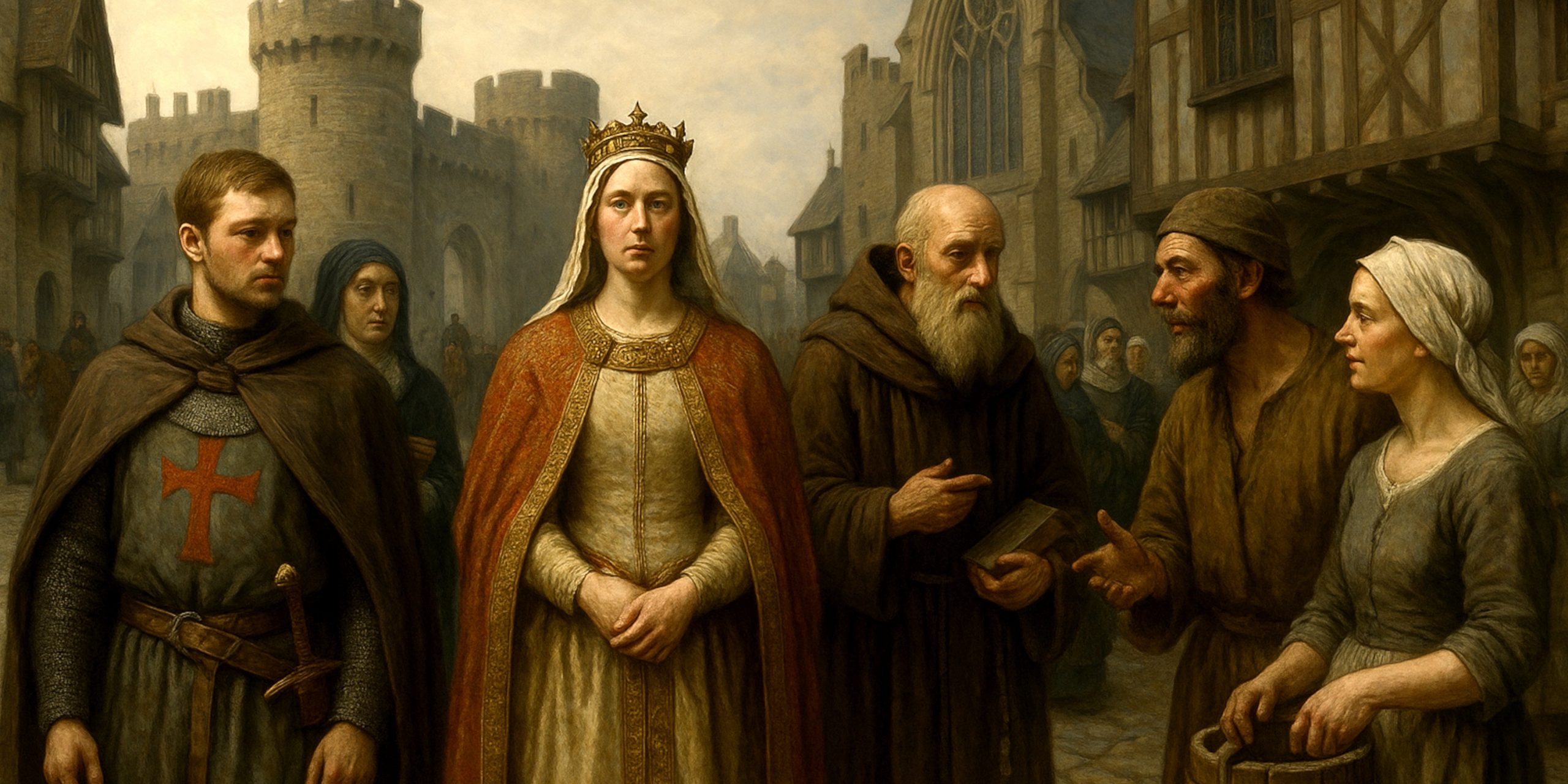
The Middle Ages are often painted as a dark, ignorant age of filth, fanaticism, and superstition. Yet beneath the clichés lies a far more complex and dynamic world. As a historian, I find that the real Middle Ages resist simple caricature. There were indeed moments of cruelty and ignorance, but also of learning, innovation, and quiet humanity. So let us sort fact from fiction with seven truths and seven myths that reveal what life in medieval Europe was really like.
7 Facts about the Middle Ages
1. The Church Was Central to Everyday Life
Religion was not simply a Sunday ritual; it shaped law, art, and even the calendar. The Church provided education, charity, and governance. Monks preserved ancient texts, while cathedral schools laid the groundwork for Europe’s universities. Spiritual life was everywhere, but it coexisted with worldly ambitions and power struggles.
2. Feudalism Structured Society
Feudalism was not a single rigid system, but the framework of obligation and loyalty that bound medieval Europe. Kings relied on nobles, nobles on knights, and everyone on peasants. In return for labour or military service, protection and land were exchanged. It was not always fair, but it worked, at least for a time.
3. Castles Were Both Homes and Fortresses
Castles were more than symbols of power. They were functional defensive structures built to control territory and inspire loyalty. Within their walls, families lived, armies mustered, and politics unfolded. They were as much about intimidation as protection.
4. Cities Were Growing and Dynamic
Contrary to the image of a stagnant rural world, towns and cities were thriving. Trade networks stretched across Europe, from London to Lübeck, Florence to Bruges. Merchant guilds and craftsmen created an early form of middle class, reshaping the medieval economy long before the Renaissance claimed credit.
5. Medicine Was Primitive but Not Ignorant
Medieval medicine had limitations, yet physicians were not helpless. They studied ancient Greek and Arabic texts, used herbs and surgery, and made astute observations of disease. While they lacked germ theory, the best medieval doctors were far from fools.
6. Education and Scholarship Survived
The myth that the Middle Ages were intellectually barren is false. The period produced Thomas Aquinas, Hildegard of Bingen, Roger Bacon, and William of Ockham. Universities like Bologna and Oxford thrived, and debates about science, theology, and philosophy filled their halls.
7. The Middle Ages Were Violent but Not Uncivilised
Battles, executions, and feuds were common, but so were codes of chivalry, laws of war, and complex systems of justice. Violence coexisted with art, poetry, and diplomacy. Medieval life was harsh, but it was not barbaric.
7 Myths about the Middle Ages
1. People Believed the Earth Was Flat
No serious medieval scholar thought the Earth was flat. Since the time of Aristotle, educated Europeans accepted that it was spherical. Sailors and astronomers relied on this knowledge centuries before Columbus set sail.
2. Everyone Was Filthy
Medieval people bathed more often than many assume. Public bathhouses were common in cities, and even peasants washed in rivers or wooden tubs. Cleanliness was associated with godliness, though access to fresh water varied by region.
3. Women Had No Rights or Influence
Women in the Middle Ages were restricted, but not powerless. Queens like Eleanor of Aquitaine wielded political authority, abbesses ran large estates, and women worked as traders, midwives, and artisans. Patriarchy was real, but it was not absolute.
4. The Medieval Period Was Entirely Dark
The so-called “Dark Ages” label was coined much later, during the Renaissance, by scholars keen to flatter their own brilliance. In truth, medieval Europe was dynamic, building cathedrals, writing epics, and developing technologies like the heavy plough and windmill.
5. Witch Hunts Defined the Era
The great witch panics came later, during the 16th and 17th centuries. The medieval Church was often sceptical of witchcraft claims, fearing superstition more than sorcery. Ironically, it was the early modern world that saw the bonfires blaze.
6. Peasants Were Miserable and Starving
Peasant life was difficult but not hopeless. Many owned small plots of land, brewed ale, and participated in festivals and markets. Community was strong, and while taxes and wars took their toll, not every villager lived in destitution.
7. Science and Religion Were Enemies
Medieval scholars often saw science as a way to understand God’s creation, not to oppose it. Figures like Albertus Magnus and Roger Bacon explored optics, astronomy, and physics under the Church’s patronage. The true conflict between science and faith came much later.
The Seven Swords Takeaway
The Middle Ages were not a monolith of darkness nor a paradise of piety. They were a thousand years of human struggle, faith, invention, and contradiction. The myths endure because they are simple and dramatic, but the truth is far more interesting. If anything, the Middle Ages remind us that progress is rarely linear, and history is never as straightforward as we wish it to be.



